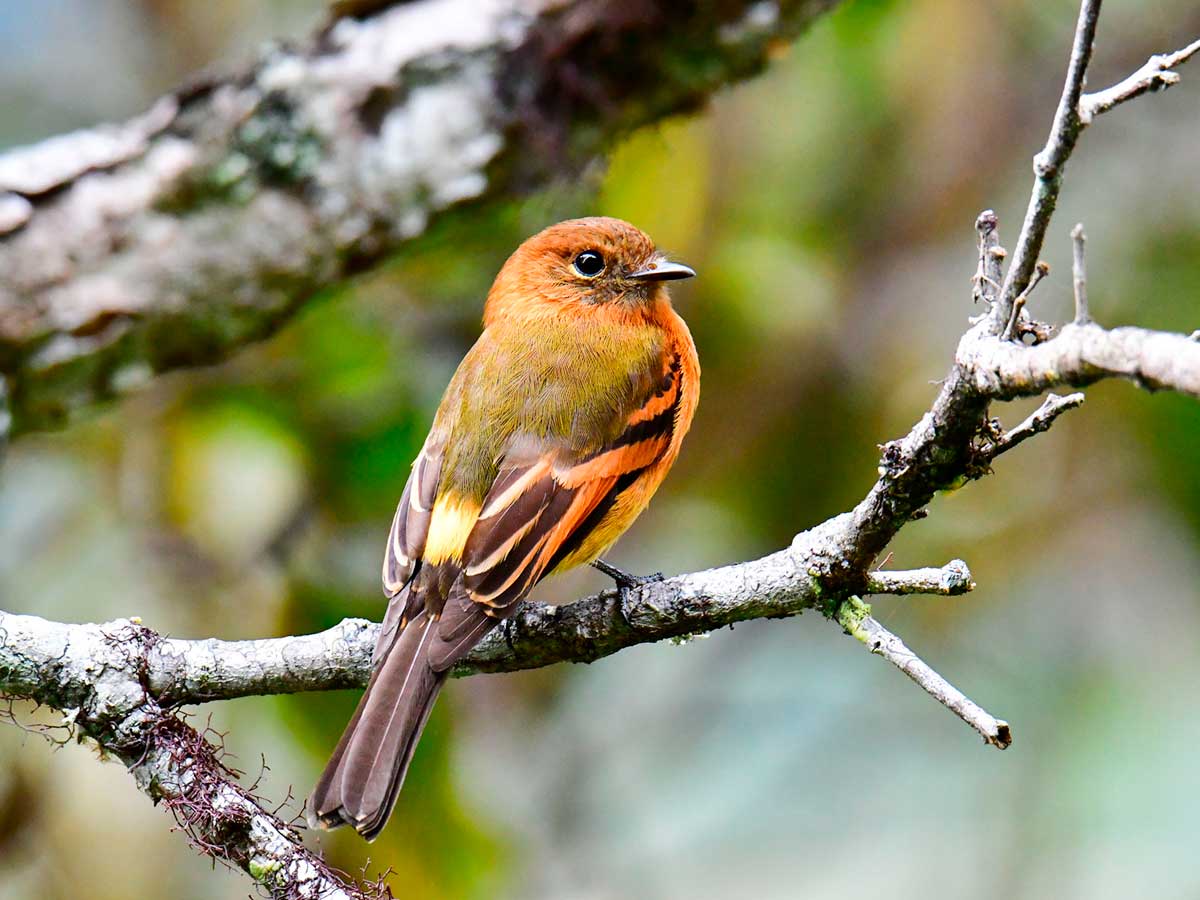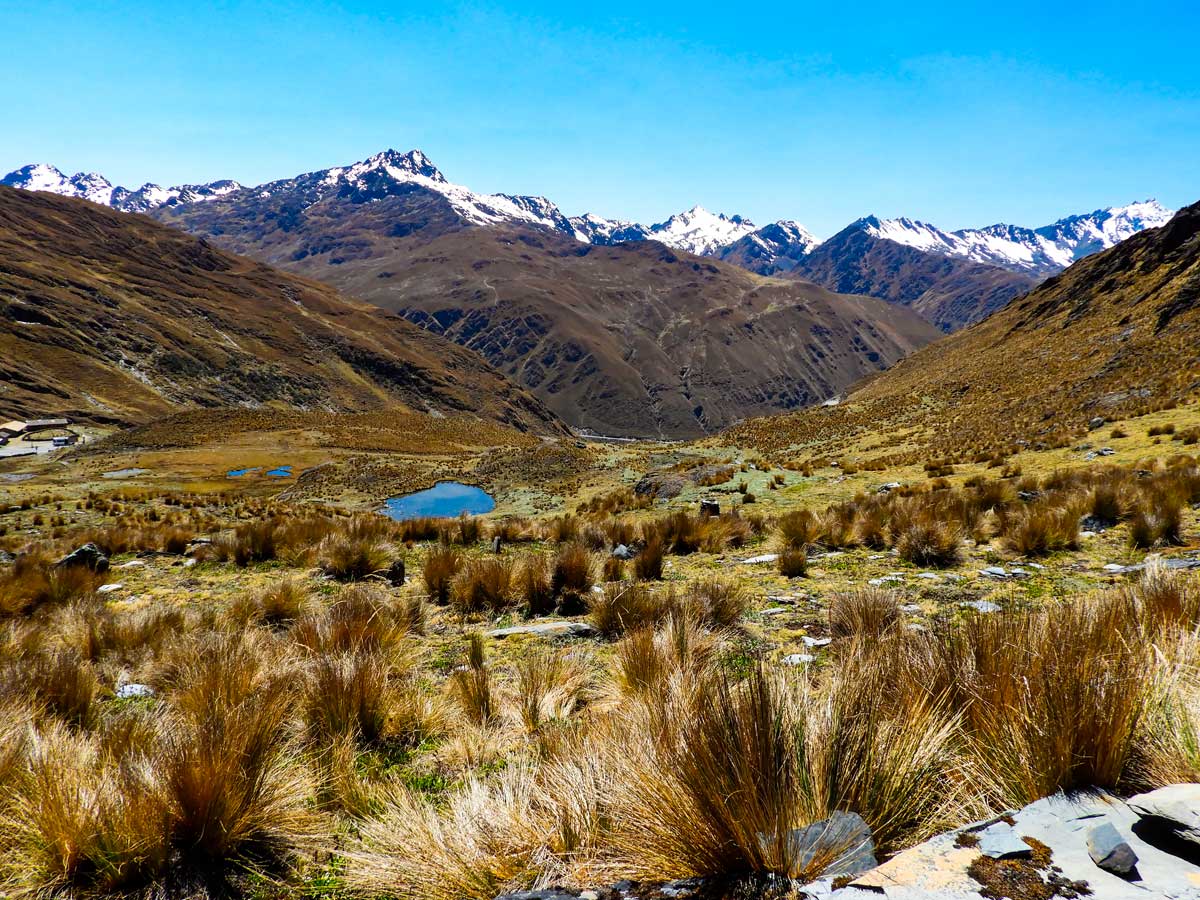

The Abra Malaga Private Conservation Area, located in the Cusco Andes, offers an exceptional panoramic view of the Verónica mountain and a natural environment that captivates its visitors. This place is a biodiversity refuge, where you can admire the flight of condors and falcons, in addition to appreciating diverse species such as deer, spectacled bears, and hummingbirds.
Abra Malaga has also established itself as one of the most prominent destinations for bird watching in Peru, hosting endemic species such as the Andean earthcreeper and the ash-breasted tit-tyrant, which attract observers and photographers. In addition to its natural value, its mountainous landscapes are perfect for quiet hikes, cycling tours, and adventure activities.
This, besides being dedicated to the conservation of biodiversity, also promotes responsible tourism that provides a unique experience for visitors to deep Peru explore. In this environment, travelers can appreciate mountain landscapes, and participate in preservation activities.
The Abra Malaga Private Conservation Area is located in the Cusco region, within the Andes mountain range. It is situated in the Ollantaytambo district, Urubamba province, and extends along the mountain pass known as Abra Malaga, at an approximate altitude of 3,900 meters above sea level.
Its location connects the Sacred Valley of the Incas with the jungle brow in the direction of Quillabamba, which makes this a key transition point between high Andean and Amazonian ecosystems. This contrast of landscapes not only offers spectacular views but also a great diversity of flora and fauna.
The climate is rainy between the months of November to April, and mild with infrequent rains between the months of May to October. The temperature varies from -5 degrees in the Abra Málaga to 20 degrees in the Carrizales area.
The study of birdlife in this area of Peru has a long history dating back to 1869, when naturalists like Sclater and Salvin, as well as Berlepsch and Stolzmann (1906), recorded their first observations.
Years later, between 1915 and 1917, the Machu Picchu Geographic Society organized scientific expeditions led by Frank M. Chapman, George K. Cherrie, and Harry L. Watkins. These trips allowed documenting the biodiversity of the Abra Málaga and provided valuable information for the knowledge of the region.
Decades later, between 1974 and 1979, researchers from the Museum of Zoology at Louisiana State University (LSU) carried out extensive inventories of birds and small mammals. For this, they established strategic camps along the Ollantaytambo–Quillabamba road, crossing the Abra Málaga (3900 m), and in the Kiteni area (450 m), beyond Quillabamba, thus consolidating the scientific importance of this area.

Leaving from Ollantaytambo, the first place to visit is Las Peñas, located 15 km away. So called because there are remains of Inca stone constructions with the same name in the place. Nearby, among the bushes and on the roadside you can see: Chestnut-breasted Mountain-finch, Tyrian Metaltail, Shining Sunbeam, White-tufted Sunbeam, Puna Tapaculo, White-browed Conebill.
The Abra Málaga Thastayoc is the highest point on the route and is the safest and most accessible area to see the Royal Cinclodes. To do this, you must follow the path that begins at the checkpoint, located at the highest point of the Abra. From there, follow the path until you reach a Polylepis forest located at 4,150 meters high. You can also see the Stripe-headed Antpitta, Blue-mantled Thornbill, Shining Sunbeam, Puna Tapaculo, White-browed Tit-spinetail, Tawny Tit-Spinetail. The route to this forest is very rugged and long. It takes between 2-3 hours to go through it.
Crossing the pass, descending the road, on the way to Quillabamba, the patches of vegetation next to the track are good places. There you will see the Puna Thistletail, Unstreaked Tit-tyrant, Creamy-crested Spinetail, Diademed Tapaculo, Thrush-like Wren, Rufous-chested Tanager, Buff-breasted Mountain-tanager, Chestnut-bellied Mountain-tanager, Scarlet-bellied Mountain-tanager, White-bellied Hummingbird.
In the area near the town of Carrizales it is possible to observe the Inca Wren.

The community of Abra Málaga Thastayoc, is located in the middle of a chain of snow-capped mountains of the Cordillera del Vilcanota, being La Verónica the most important and locally known as Huacaywillki, surrounded by lagoons, wetlands at the head of the basin, important for storage of water. There are also fragments of native forests of Polylepis or queuñas, which is the species that grows at the highest altitude in the world. In this area, evaluations of flora, avifauna, mapping, socio-economic diagnoses have been carried out, as well as monitoring plans for the care of the ecosystem, implementing different conservation programs, the main one being the afforestation and reforestation campaigns with native species and other conservation strategies.
It is the most visited part of Abra Málaga. From the road, less than a 30-minute walk at an altitude of 4,250 meters, you will find a Polylepis pepei forest and small fragments of Polylepis serícea on the slopes of the snow-capped Kosñirity.
Through a wide path you reach the first viewpoint where you can see the forest with several fragmented areas. The total route is 7 km, and you can choose the route that you like the most and the species you want to see. The main endemic species to see are: royal churrete, ash-chested bull, white-browed scissor; other species such as tawny earwig, puna cover, striped forehead basket, giant cone beak and others.
It is the area that is in the direction of Quillabamba, with a fairly humid climate, here there are other species of Polylepis accompanied by bamboo vegetation, and among the bird species you can see Marcapata coliespina, plain bull, tail-thistle of the puna, wavy tororoi, Parodi's hemispingo, and scarlet-bellied mountain tanager, among other species common to the area.
From the Community of Thastayoc, a one-two-day walk begins in the direction of the Choquechaca ACP, passing through the Kataccocha, Kelwaccocha and Komerccocha lagoons, and the pass of the Huaccractanca pass and snow-capped mountain, getting to appreciate the Queuña de Choquechaca forest. Several directions depart from here that can continue to Pumamarca, Huilloc community, Patacancha or Rumira Sondormayo.
A second alternative route is starting the walk from the Abra Málaga Private Conservation Area, then passes through the community of Panticalle, Alfamayo, Huyro, Santa María, Santa Teresa, to reach the Archaeological Center of Machu Picchu.
From Cusco, go to Ollantaytambo and spend the night. Most of the lodgings are comfortable but small and do not have a garage.
To go to Abra Málaga you must take the road to Quillabamba in a private car or taxi. Public transport has fixed departure times in the morning. On the route there is no cell phone coverage.
Tourist ticket cost is PEN 20 per person *
* This Private Conservation Area is part of the Network of Private Conservation Areas of the Cordillera del Vilcanota. With this ticket you can access all the communities of the ECOAN Community Network. The night in a room is S / 30 per person per night. And if you want to camp they are S / 10 per person. Does not include food or transportation.
Beyond the majesty of Machu Picchu, the surroundings of Cusco offer a variety of experiences that allow you to connect with the culture, history, and landscapes of the Andean Peru. From traditional towns to little-explored natural wonders, there is much to discover just a few kilometers from the imperial city. Discover the best tours in the Cusco region:
Sacred Valley, Inca Trail, Machu Picchu and more